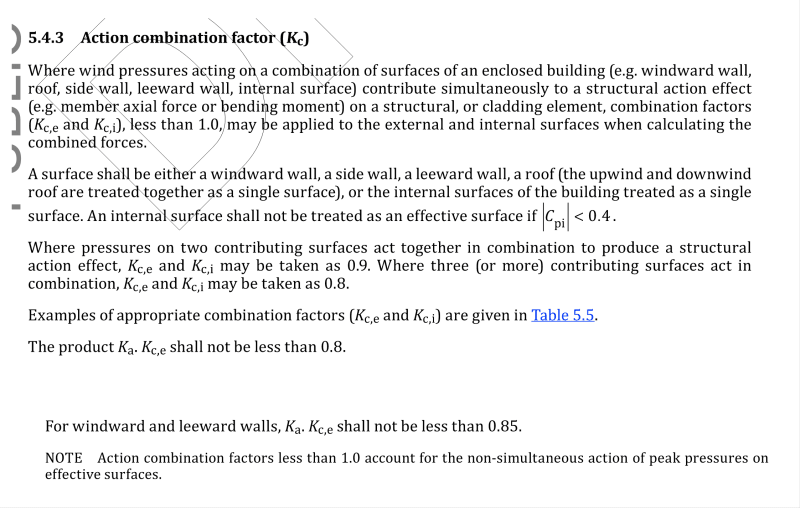Rajshrn06
Civil/Environmental
- Jun 29, 2020
- 11
Are we permitted to use the action combination factors kc,e and kc,i from Table 5.5 of AS1170.2: 2011, when designing the Roof cladding and Purlins for internal pressure?
This is particularly for buildings designed in region C and D, which can have very large internal pressures.
Previously, in 2002 version of the code, combination factors were only valid for major structural elements. The 2011 code is silent on this. I feel that we cannot use kc,e and kc,i for Purlins and Claddings as these members may not get adequate time to develop combined actions as the gust winds would be instantaneous. Similar to the fact that we have to use directional multiplier Md as 1.0 for cladding and immediate members.
This is particularly for buildings designed in region C and D, which can have very large internal pressures.
Previously, in 2002 version of the code, combination factors were only valid for major structural elements. The 2011 code is silent on this. I feel that we cannot use kc,e and kc,i for Purlins and Claddings as these members may not get adequate time to develop combined actions as the gust winds would be instantaneous. Similar to the fact that we have to use directional multiplier Md as 1.0 for cladding and immediate members.

